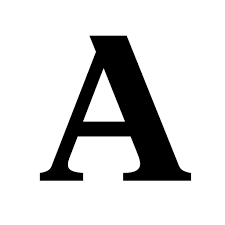Watch the Skies (and the Earth)! Things From In and Out Of This World
DOI:
https://doi.org/10.24310/Trasvasestlc.vi2.8467Keywords:
film adaptation, John W. Campbell, John Carpenter, Who Goes There?, The ThingAbstract
What and how many are the «Things» that have crowded science fiction literature and cinema, beginning with the story «Who goes there?», by John W. Campbell, and the first film, The Thing from Another World, extracted from this book by Christian Nyby and Howard Hawks and, after that, the remake by John Carpenter with the simple title The Thing? And how do we get to the historical-political chart of Italy in the 70s through the filter of science fiction? Why, for example, the Italy marked by the mafia power («Cosa Nostra») and terrorism becomes the privileged functional space of the «thing paradigm»? This paper is entrusted unravel the imperious ghost («Cosa Nostra») y por el terrorismo se convierte en el espacio funcional privilegiado del «paradigma de la cosa»?Downloads
Metrics
Publication Facts
Reviewer profiles N/A
Author statements
Indexed in
-
—
- Academic society
- N/A
- Publisher
- Universidad de Málaga
References
ANTONIONI, Michelangelo (1983), Identificazione de una donna,ed. de Aldo Tassone, Torino, Einaudi.
ARONA, Danilo (1983), «La forma della cosa», Cinema & Cinema, 34, págs. 37-40.
BRAGHETTI, Anna Laura y Paola TAVELLA(2008), Il prigioniero, Milano, Feltrinelli.
CAMPBELL, John W., (1955), Who Goes There?and other stories. New York, Dell Books.
CHIODI, Giulio Maria (2011), La coscienza liminare. Sui fondamenti della simbologia politica, Roma, Franco Angeli.
FLAMIGNI, Sergio (1999), Il covo di Stato. Via Gradoli 96 e il delitto Moro, Milano, Kaos.
FLAMIGNI, Sergio (2003), La tela del ragno, Milano, Kaos.
LACAN, Jacques (2008), «Introduzione della Cosa», en Il seminario. Libro VII. L’etica della psicoanalisi. 1959-1960, Torino, Einaudi.LEM, Stanislaw (1988), Solaris, Barcelona, Minotauro.
LIMITI, Stefania (2009), L’Anello della Repubblica, Milano, Chiarelettere.
MALANGA, Paola [ed.] (1998), Marco Bellocchio. Catalogo Ragionato, Milano, Olivares.
MANCINO, Anton Giulio (2012), Schermi d’inchiesta. Gli autori del film politico-indiziario italiano, Torino, Kaplan.
MARTINELLI,Roberto y Antonio PADELLARO(1979), Il delitto Moro, Milano, Rizzoli.
MAZZOCHI, Silvana (1994), Nell’anno della tigre. Storia di Adriana Faranda, Milano, Baldini & Castoldi.
PEZZOTTA, Alberto (2004), Regia Damiano Damiani, Pordenone, Cinemazero.
SPAGNUL, Giuliano (1979), «La critica», en AA.VV. (Collettivo Un ambigua utopia), Nei labirinti della fantascienza. Guida critica, Milano, Feltrinelli.
ŽIŽEK, Slavoj (2011), Tarkovskij: la cosa dallo spazio profondo, Milano, Mimesis.
Downloads
Published
How to Cite
Issue
Section
License
All authors published in this journal accept the following copyright terms:
a. Authors retain their authors´ rights (copyright) and grant First Publication Rights to the journal, which whill be published under a the Creative Commons Attribution-NonCommercial-ShareAlike 4.0 International (CC BY-NC-SA 4.0) license. All about this license is available in the following link: <http://creativecommons.org/licenses/by-nc-sa/4.0>
b. Authors may separately establish additional agreements for the non-exclusive distribution of the version of the work published in the journal (e.g. including it in an institutional repository, or publishing it in a book) with an acknowledgement of its initial publication in this journal.
c. Authors are allowed and encouraged to disseminate their work electronically (e.g. in institutional repositories or on their own website) as this can lead to productive exchanges, as well as earlier and more extensive citation of published work.
The author is responsible for obtaining permission from the copyright holder when using copyrighted materials.
This electronic journal is published by University of Málaga (UmaEditorial), thus it is necessary to cite the origin of any partial or total reproduction.








22.png)










